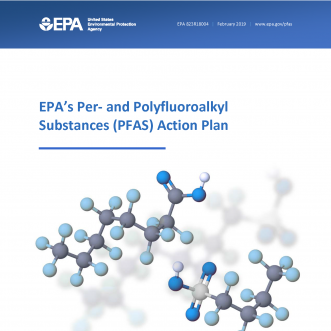This is an update to CEC’s blog posting of February 27, 2017, that described upcoming changes to Ohio’s Bureau of Underground Storage Tank Regulations’ (BUSTR’s) rules in the Ohio Administrative Code (OAC) 1301: 7-9-01 et. seq. (https://www.cecinc.com/blog/2017/02/27/bustr-proposes-rule-revisions-for-ohio-usts/). Since then, the draft rules underwent additional revision and have been through review and approval of the Joint Committee on Agency Rule Review (JCARR).
The new rules were issued final on July 31, 2017, and became effective September 1, 2017. Most of the changes described in our February blog were maintained; however, there were some changes to the proposed rules – some minor, some more significant – that were incorporated into the final rules. The more significant changes include:
- Rule 02, Definitions: BUSTR did not include work on spill prevention equipment and cathodic protection in the definition of a “modification.” These activities are included under “routine maintenance or normal operational upkeep.” The definition of “free product” as used in prior rules was retained in the new 2017 rule.
- Rule 04, System Registration: A 10% late fee was added to UST registrations that are filed after June 30 of each year.
- Rule 06, Design, Construction, Installation and O&M: BUSTR retained requirements from previous rule sets pertaining to internal linings added in the field to USTs and containment systems for new dispensers. October 13, 2018, was established as the final compliance date for performing spill and overspill prevention equipment testing and walkthrough inspections. BUSTR removed the requirement to obtain a modification permit to perform a change of product, and clarified the acceptable “codes of practice” that apply to installation, modification, and repair of UST systems.
- Rule 07, Release Detection: Rule language was modified to allow owners and operators of UST systems that store fuel for use by emergency power generators to request approval of an alternative method of release detection in lieu of installing automatic line leak detectors on pressure lines. BUSTR removed requirements for a “qualified person” to evaluate automatic tank gauging equipment. Language was added that pertains to manufacturers who are no longer in business. Record retention requirements were reduced from the proposed three years to one year for sampling, testing, or monitoring, and reduced from five years to three years for calibrations, maintenance, and repair of release detection equipment.
- Rule 12, Closure Rule: The time period for actions required for UST systems that are out-of-service for more than twelve months was relaxed from 30 days to 90 days. Specifications were added for inert material used to fill a UST to have a density that is greater than the density of water. They also specified that the installation of monitoring wells was only required if groundwater is encountered around a UST system or portion of a UST system that was permanently removed, closed-in-place, or underwent a change-of-service on or after September 1, 1992, where a closure assessment was not conducted in accordance with the rules effective at that time.
- Rule 13, Corrective Action Rule: The previous definition of “free product” was retained consistent with the Rule 2 definition.
- Rule 15, Delegated Authority: A provision was added to allow a certified inspector to be employed by the owner or operator.
In our opinion, one of the more significant shifts from the 2012 rules to the 2017 rules occurred in the Corrective Action Rule (OAC 1301:7-9-13, or Rule 13) with the inclusion of additional chemicals of concern (COCs) for Analytical Group 1 – Light Distillates. Naphthalene and 1,2,4-Trimethylbenzene (1,2,4-TMB) were added to the list of aromatic hydrocarbon analyses for all release investigations. Two other chemicals, 1,2-Dibromoethane (ethylene dibromide, or EDB) and 1,2-Dichloroethane (ethylene dichloride, or EDC), were added to the list of additives. These constituents are to be analyzed only for release sites where the USTs were in service prior to January 1, 1996, and where the USTs contained aviation gasoline (“av-gas”), racing fuel, and used oil. This change in COCs will not only have implications for UST owners currently performing corrective actions, but also for former UST sites undergoing Phase II Environmental Site Assessments for property transfers.
If you would like to learn more about how the new BUSTR rules may impact your operations or if you would simply like further information, contact Brent Smith (brsmith@cecinc.com) or Andy McCorkle (amccorkle@cecinc.com) at (614) 540-6633.

Post a Comment